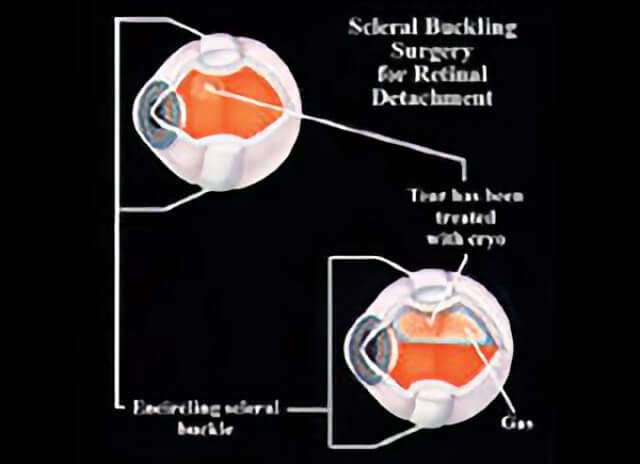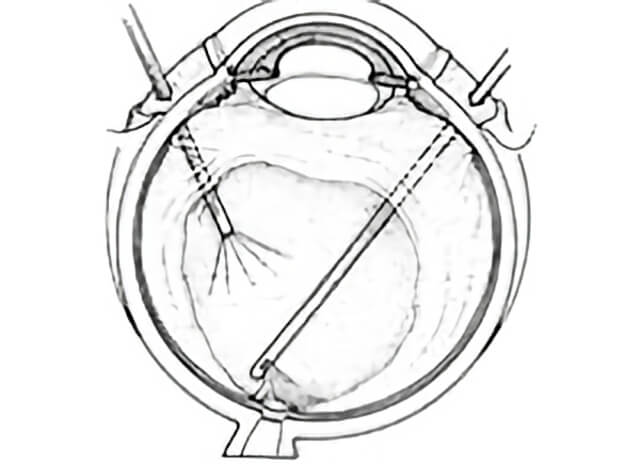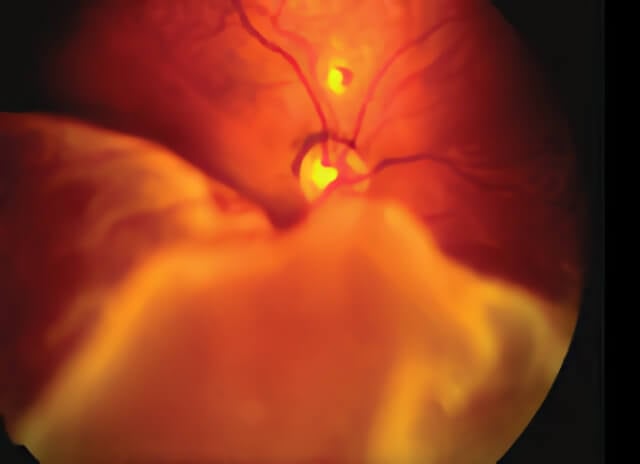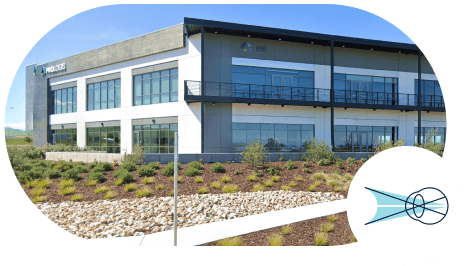Surgical Repair of Retinal Detachment
Surgical Repair of Retinal Detachment
There are two surgical approaches to repairing a retinal detachment. A scleral buckle is performed by operating on the exterior of the eye while a vitrectomy is an internal technique.
What is a scleral buckle?
First a freezing probe is used to seal around the tear. Then, a silicone band, like a belt, is secured around the eye, beneath the muscles that control eye movement. It creates a slight indentation in the eyewall that helps compress the retina back into proper position

A scleral buckle is a silicone band put around the eye to support the retina after cryotherapy has been applied to the retinal break. Sometimes a gas bubble is placed inside the eye to temporarily hold the retina against the buckle.
When is a scleral buckle employed?
Combined with draining fluid out from under the retina, scleral buckling surgery can reattach the retina without the need for a gas bubble injection. A scleral buckle is effective in young persons or situations where the retina is torn at the bottom of the eye. This technique is used alone or in combination with vitrectomy and is essential in repairing more complicated retinal detachments.
How successful is surgery to reattach the retina?
About 90% of patients are reattached after a single operation. This means that 1 out of 10 patients will need a second operation to completely fix the detachment. This is usually caused by the development of another tear due to scar tissue that develops during the healing process.
Will a scleral buckle show when I look at my eye?
No, it blends in completely with the white color of the eye and is hidden under the eyelids.
Does a scleral buckle ever need to be removed?
For the vast majority of patients, the scleral buckle remains permanently in place. Only rarely does the buckle require removal.
What about vitrectomy to fix a retinal detachment?
This is an internal surgical approach that is used for all sorts of eye diseases. In retinal detachment repair, the surgeon first clears away debris and identifies the tear. The retina is reattached using a bubble of air or other gas. Then the tear is sealed with laser. The air is replaced with a gas that acts as an internal “splint” holding the retina in place.

In vitrectomy surgery, microsurgical instruments are used to operate inside the eye. In the illustration, these instruments are removing the vitreous gel.
What about the gas, the bubble and head positioning?
Most patients will need to face downward or to the side to maximize the chance of a successful repair. Usually, 5 to 7 days is all that is required
What about altitude travel?
While the gas bubble is in your eye, you will not be able to exceed altitudes higher than about 1000 feet for several days. Expansion of the gas can cause dangerously high eye pressure. Plan to stay a few days at sea level after surgery. Your surgeon will explain more.
What if my retina detaches again?
Although about 90% of retinal detachments can be repaired in a single surgery, about 10% will need a second or even third surgery before successful reattachment is achieved. This fact underscores the complexities of ocular surgery. The Retinal Consultants are among the most talented and experienced surgeons in the world. We will provide the best most comprehensive care available anywhere. Preserving your vision is our vision.

A retinal detachment is present in the lower half of this photograph.


